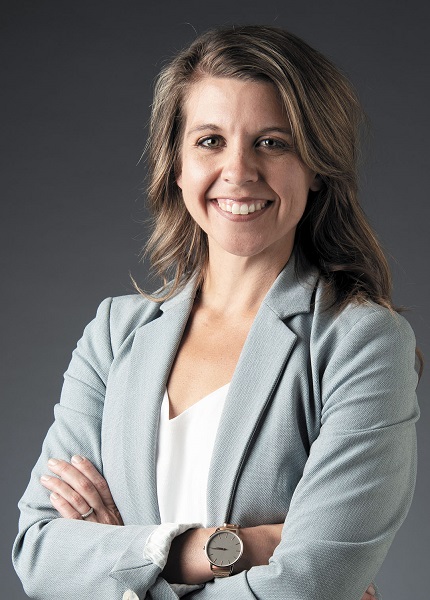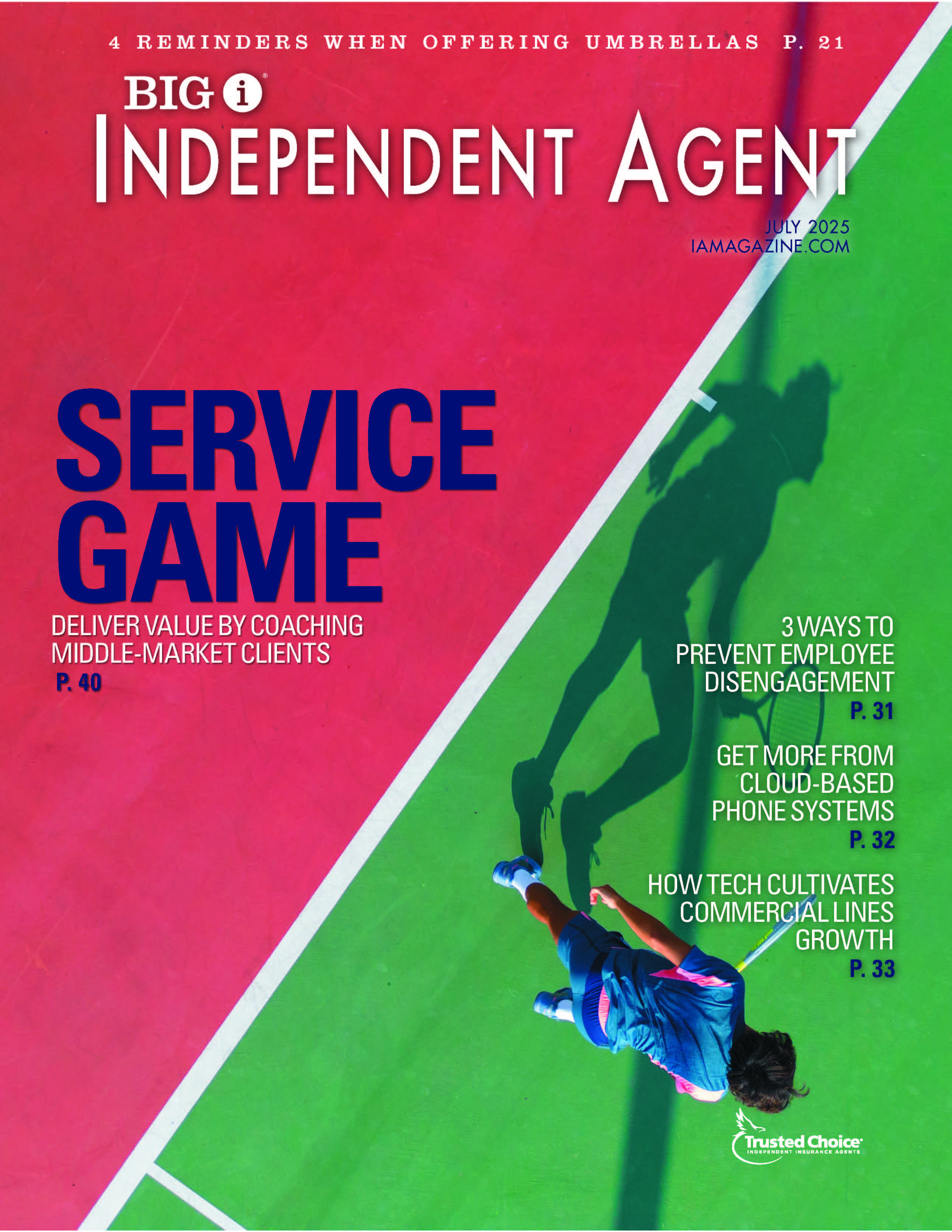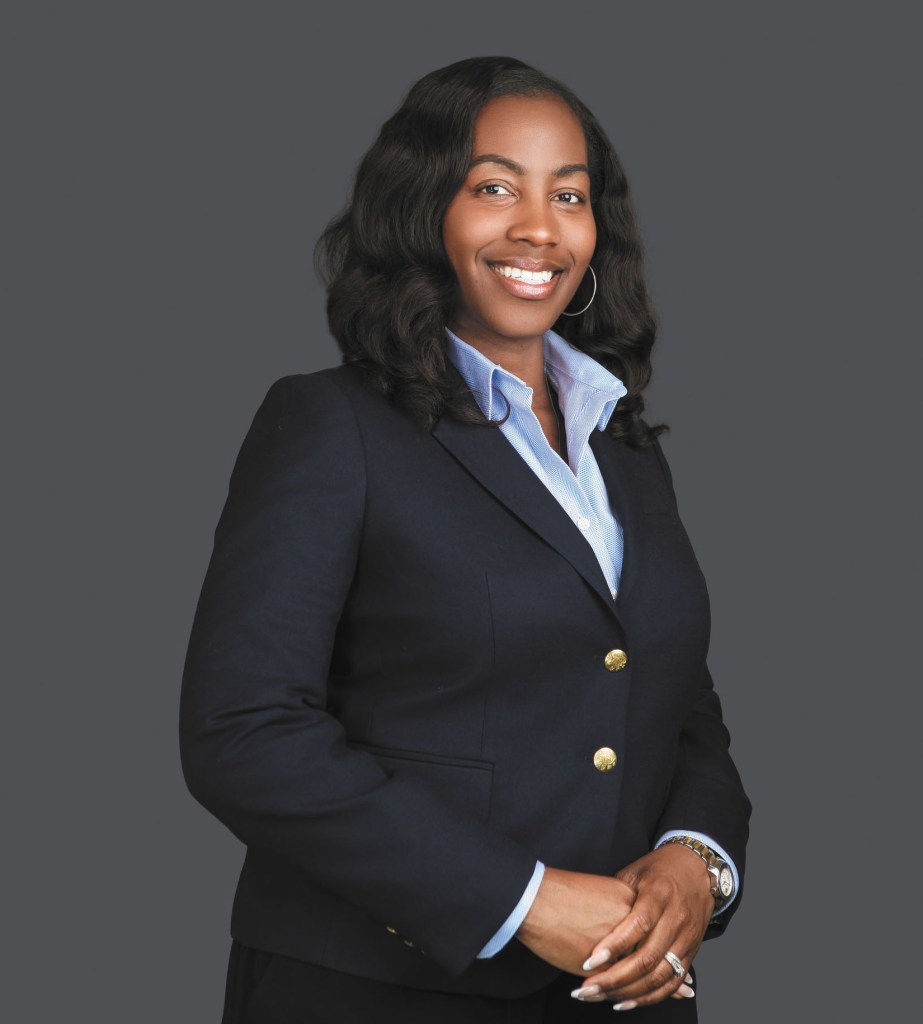Declaration of Independents: Dani Kimble
By: Jacquelyn Connelly

Dani Kimble
Chief Marketing Officer
O’Neill Insurance
Wadsworth, Ohio
Dani Kimble spent most of her life building a career in dance. But after two arts degrees and five years of performing and teaching dance, an old knee injury struck again—and a doctor advised her to consider a different kind of future.
“The doctor said, ‘If you want longevity, if you want to be able to run around the park with your kids, this may be the time to start looking for something else,’” Kimble recalls. “It was devastating to me at the time, but now, looking back, I feel like it was really a blessing in disguise.”
WHY INSURANCE MARKETING?
I knew I needed to be doing something creative, and I thought marketing could be a good outlet for me. Insurance is perceived as being very stale and boring and dry, but once you get into the industry, you discover there’s so much vibrancy and light and love and just true passion for making sure people have the best protection possible. I felt like that message was not being communicated in a way for the general public to truly grasp it. Coming from a background in the arts, where it’s all nonprofit organizations that are advocating for a bigger purpose, I felt like, “Man, I can really tackle this, and I can do it through marketing.”
I really enjoy the challenge of changing that perception. How can I communicate to the public with a clear, transparent message that shows them this is deeper than paying your premium every month? The ultimate goal is to get them to understand that when an accident happens, the first thing you’re asking is not, “How much is my premium?” The first thing you’re asking is, “Am I covered?”
MESSAGING?
It’s less about trying to sell people insurance, and more about inviting them into our culture—inviting them into our community.
EMBRACING CHANGE?
When I first came into O’Neill Insurance, the logo hadn’t been updated since the ’90s, the colors were dark green and dark gold—everything about it felt stale, but the people were beautiful. I used our culture as a launching pad and started rebranding the whole organization. I created a digital footprint through content, pushed it out on social, and now we use digital marketing in a way that presents who we are, what our culture is and the work we’re doing in the community.
MARKETING ADVICE?
If you want to get started on tackling the marketing, whether you’re bringing somebody from outside or somebody in-house, look at the processes you already have in place. It could start with, OK, you bring a new client on—what do you send them right away when they become a new client? Do you have a welcome kit that goes out? Or are you just having the carrier send them their policy and that’s it? Look at the processes you have in place, and then infuse elements of marketing within those processes. That way you’re not disrupting the entire agency by trying to throw out all these marketing ideas, because you’re not messing with the process other than just inputting marketing components into the processes that have already been created.
I’d also say to focus the messaging less around insurance products and more around the purpose of insurance and the people who are driving it. I’ve tested this so many times because people question me and my marketing strategy sometimes—I’ll put up a stock photo of an umbrella and a quote about umbrella insurance that’s coming straight from a carrier, and I will literally lose followers on our social media.
You have to think about, why are people going onto social media? They’re going there to be social—to build relationships with their community. So while occasionally we’ll put up insurance-related materials, it’s probably one out of every ten posts, and the other nine are focused on the culture of the agency.
PERPETUATION GAP?
We engage with our local university, the University of Akron. A couple years ago, they were getting ready to launch a risk management insurance program. As soon as that press release came out, I reached out to them and said, “What do we need to do to be involved?”
At the time, Westfield Insurance, one of our top carriers, was offering a grant program for their legacy partners. We happened to be a legacy partner, so we could nominate a nonprofit organization in the community to receive funds to support a project. We ended up getting $11,000 to help the University of Akron launch their risk management program. It supported a scholarship program for the students there, and then it also supported an event which helped introduce students to the program—exactly what a risk management degree looks like, and what careers in insurance and risk management look like.
So we got really active there from the start. Since then, just through our own funding, we offer scholarships each semester, and we recently hired one of the first graduates from the program. It’s really about all the work you put in to build those relationships up front. Now, many of those students follow us on LinkedIn, they follow us on Instagram. If I happen to catch a University of Akron student follow us on Instagram, I’ll send a direct message a video of myself from the O’Neill Insurance account saying, “Hey, just saw you’re involved with the University of Akron program—that’s awesome, we love that program, if there’s anything we can do to help you along your journey, please feel free to reach out.”
We’re really just working on building those relationships with those students. Then they feel comfortable reaching back out, and they feel like they have a network to go to. And that doesn’t mean they have to come work for us—it’s just, “Let’s grab coffee and talk about what your future could look like in this industry.” It’s really preparing them to jump in.
WORK/LIFE BALANCE?
I have three kids—they’re 6, 4 and 2—and I’m fortunate to work for an organization that is very family-based, as most independent agencies are. My role as a mother and as a wife is more important to them than my role as a chief marketing officer. I come in at 8:30 and leave at 3 so I can pick up all my kids, go home and make dinner and be a mom, and then if I need to make up the work in the evenings or the weekend, or if I just feel like I’m behind, I can. But they’re not tracking my hours—there’s that level of trust.
I think it’s really important for agencies to be receptive to their team members’ personal needs. Many within my millennial generation appreciate that flexibility with the understanding that we have the technology we need to work remotely at any time. The flexibility my agency offers has created so much happiness in my home—and on the flip side, it also makes me work that much harder for the agency.
STAYING CREATIVE?
I find that I’m most creative between 3 and 5 in the morning. I don’t do it every day, but I always aim for three days a week when I’ll get up and do some kind of creative task. Whether that’s blogging or creating the social posts or graphics, it has to be creative work, because I can optimize on that time and get a lot done in that chunk of time before the kids wake up. I value that time so much.
PHOTO BY JERRY MANN










